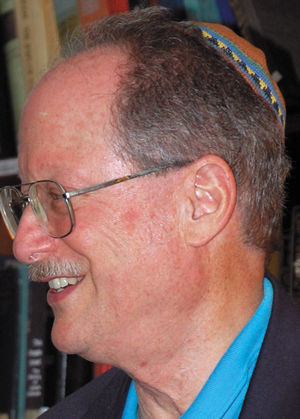“Heart and Soul” An Enduring Classic
Published August 2, 2017
“Heart and Soul” is the title of a song composed in 1938 with music by Hoagy Carmichael and lyrics by Frank Loesser. It soon became a jazz and big band standard. The 1961 recording by the Cleftones endures as a rock ‘n’ roll and R&B anthem. Last year, Yo Yo Ma and the Silk Road Ensemble made “Heart and Soul” a classical/jazz crossover hit. One of the most popular tunes and familiar melodies for the last 80 years, this song has been covered in diverse genres by the likes of Ella Fitzgerald, Dean Martin, and Train (with new lyrics as “Play That Song”). If you missed Tom Hanks and Robert Loggia “play” “Heart and Soul” in the film “Big,” you’ve missed something special.
Heart and Soul-not the song, but the concepts-play a role in our Torah Portion this week. The Parashah is Va-ethanan, Deuteronomy 3:23-7:11. This Sidrah is remarkable: it contains among other things, a rendition of the Ten Commandments (Deuteronomy 5:6-18), and the “watchword of our faith,” the Shema Yisrael (6:4), along with the first paragraph of the liturgical Shema (6:4-9). It is this week that we read from the Torah, “Hear O Israel, the Eternal is our God, the Eternal is one. You shall love the Eternal your God with all your heart and with all your soul…” (6:4-5). I often render these words “Listen, understand, Jewish people — both individually and collectively — the Eternal is our most significant spiritual Other, the Eternal alone. Prefer, accept, the Eternal, with all your heart and soul.”
Commenting on these verses the Midrash asks, “What is the difference between “with all your heart” and “with all your soul”? (Deuteronomy Rabah 2:26; the phrase “with all your might” is not taken under consideration here.) In this interpretation our Rabbis did not further examine “with all your heart,” which basically means “wholeheartedly,” but they did delve into “with all your soul.” Thus the Sages state that,
Rabbi Simon said, “The soul is called by five names, which are: ruah, nefesh, n’shamah, hayah, and y’hidah.” The Rabbis say, “Come see: the Holy One of Blessing fills the world and the soul fills the body. The Holy One of Blessing sustains the world and the soul sustains the body. The Holy One of Blessing is unique in the world and the soul is unique in the body. The Holy One of Blessing does not sleep and the soul does not sleep. The Holy One of Blessing is pure in the world and the soul is pure in the body. The Holy One of Blessing sees but is not seen, and the soul sees but is not seen. So, the soul which sees but cannot be seen gives expression to the Holy One of Blessing who sees but cannot be seen.”
In their efforts to understand and to teach spiritual ideas and ideals, our Rabbinic Sages treated the soul and God as analogues. Having a notion about one aided in getting a sense of the other, and vice versa. For our Rabbis, the spiritual dimension of the universe correlated with the spiritual dimension of a human being- and vice versa.
“Spirituality” has become a buzzword in recent years, but it long since has been central in Judaism. Heartfelt and soulful attention to the spiritual force within the world and within ourselves, to the immaterial, invisible, eternal, sacred, and unifying qualities of the world and of humanity has been- and should be- at the heart and soul of Judaism, now perhaps more than ever.















